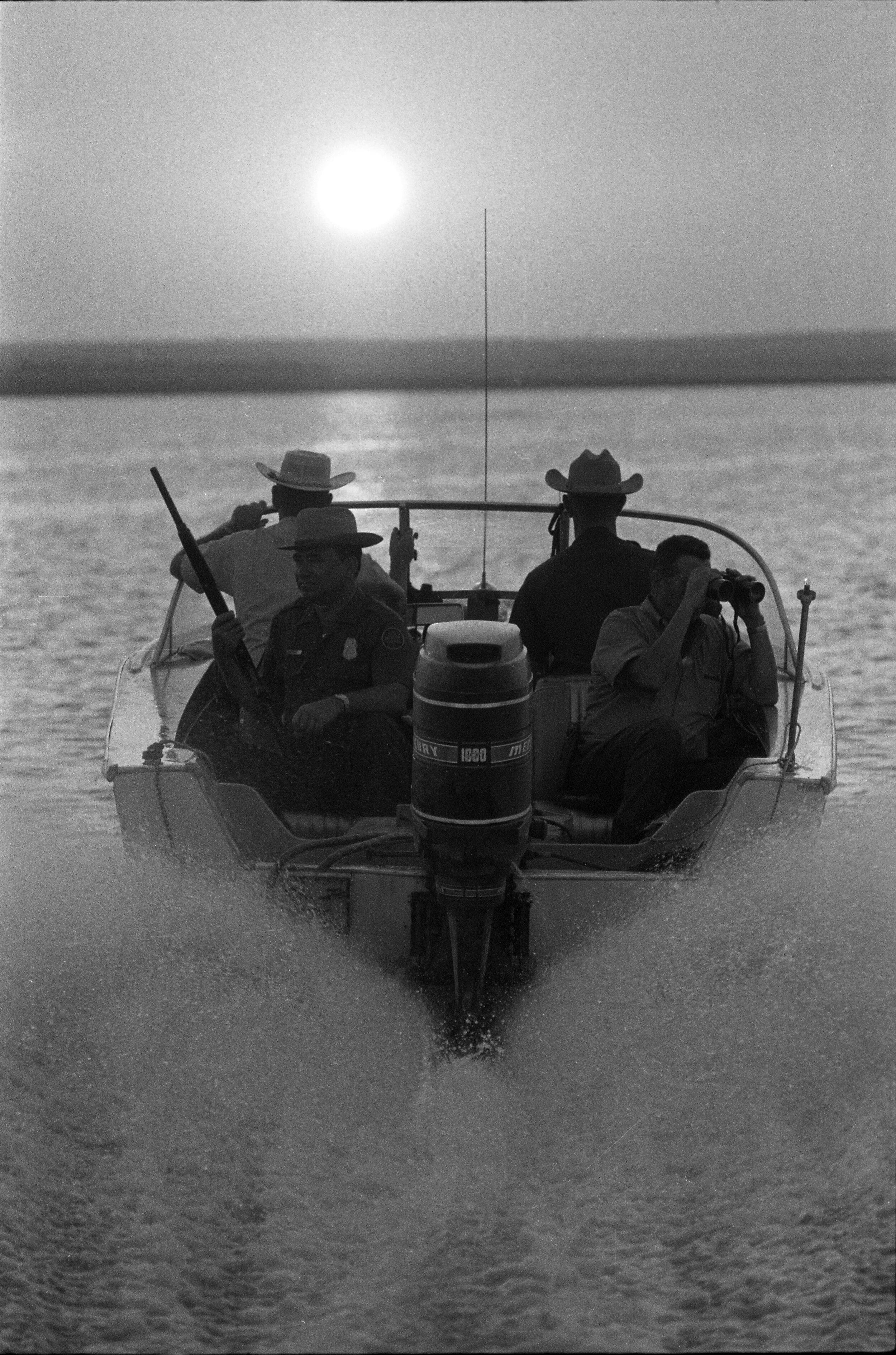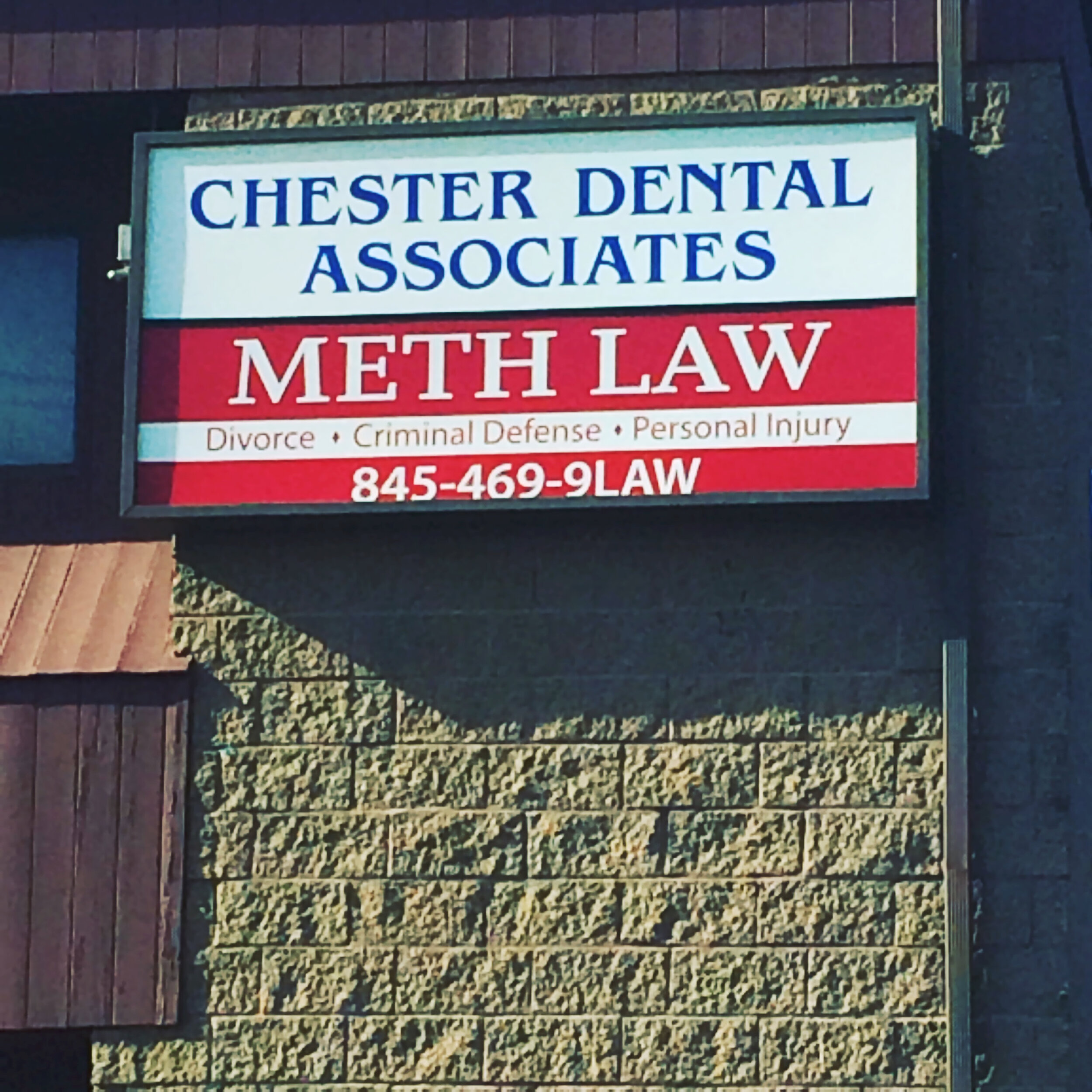from the archives
Excerpt from OSMOS Issue 10
WAR ON DRUGS
BY CAY SOPHIE RABINOWITZ
Co Rentmeester's 1969 photograph of Police patrolling the waters between Mexico and the U.S. looking for marijuana smugglers, during Operation Intercept evidences that deputies were armed and patrolling the border to capture traffickers and seize product even before Congress passed the Comprehensive Drug Abuse Prevention and Control Act of 1970. Often cited as Nixon's declaration of war on drugs, the act inherited its prohibition power with a shifting of the constitutional basis for drug control from its taxing authority to its power to regulate interstate commerce, thereby transferring drug policy enforcement to the Department of Justice. Commonly known as the Controlled Substances Act, it categorized controlled substances based on their medicinal use and potential for addiction and even repealed federal mandatory minimum sentences for possession of marijuana. Incidentally, it was not part of a socially liberal or humanitarian agenda, quite the opposite: citing a report on the growing heroin epidemic among U.S. servicemen, President Nixon declared drug abuse to be "public enemy number one”, which established a demarcation, a border between the zone of protection for "us" and an institutionalized wall to be built around "them". It would not take long for federal laws to effectively herd off people of color, victims of trauma, poor, uneducated, and disenfranchised men and women and their children for decades.
In 1982, Vice President George H. W. Bush and his aides began pushing for involvement of the CIA and U.S. military in drug interdiction efforts to fund activities in Panama, Columbia and Mexico, where, according to a report by the Associated Press, the drug war has claimed nearly 50,000 lives each year.
When Reagan passed the Anti-Drug Abuse Act of 1986 and thereby established twenty-nine new mandatory minimum sentences for drug offenses, that war came home. Legally armed with a racist disparity in how to treat crack cocaine vs. powder cocaine, the courts converted first time offenders into lifers.
In the 1980s and 1990s, incarceration became de facto urban policy for impoverished communities of color in America. Legislation imposed mandatory minimums, which denied public housing to families if any member was even suspected of a drug crime, expanded federal death penalty-eligible crimes and parole restrictions. Thereby multiple generations of the most vulnerable populations found themselves confined to long term prison sentences, were denied access to health and human services, and left to contend lifelong with social and economic marginality. In 1992, fifty-two percent of women with AIDS were black, and seventy-five per cent were either black or Latina; shortly thereafter AIDS became the number one killer of minority children.
The Washington Post reported last year that about 100,000 federal inmates — or nearly half — are still serving time for drug offenses, among them thousands of nonviolent offenders sentenced to life without the possibility of parole. According to the American Civil Liberties Union, most are poor, and four in five are African American or Hispanic.
Brad Brooks’ "Just Say NO to Nancy" series was conceived as a play on the Big Star/Grand Union Food Stores shopping bags which advertised Nancy Reagan's "Just Say NO to Drugs" campaign and parodied the simplistic nature of her reasoning. The series included postcards and perforated stamps, t-shirts (red on white) and the silk-screened brown paper bag parodies. Brooks and his nephew sold the t-shirts on Peachtree Street during the 1988 Democratic National Convention in Atlanta. But the best intervention involved Brooks and Clifton Meador taking a stack of the brown paper bags to the Big Star super market on Ponce de Leon Avenue. They put their “Just Say NO to Nancy” bags in a shopping cart, rolled it into the store during rush hour, approached one of the busy bag boys at a checkout lane and said, "Hey, somebody left these in a cart. Do you want them?" He said, "Sure," and chucked them right into the shelf and started bagging with them. Brooks recalls in an email: “I would bet they were all gone from the store and on peoples' kitchen counters before anyone figured it out.”
In 2005 Tobias Wong and Ju$t Another Rich Kid , produced a wry commentary on the war on drugs through an intervention in consumer culture. Cokespoon #2, a gold-plated bronze cast of a McDonald’s coffee stirring spoon, transformed the once ubiquitous disposable piece of plastic to the level of a luxury good. The plastic “original” version was discontinued in 1979 during the so-called Paraphernalia Wars when it appeared countless times as an Exhibit A in drug bust cases due to its ideal size and shape for doling out cocaine. Eventually the McDonalds’ spoon became a flat coffee stirrer.
Just as McDonalds redacted the functional original due to lobbying from reactionaries whose campaigns cast a veil over the realities of a drug epidemic by attributing drug use to the sale of paraphernalia, the art object was similarly discontinued after its distributor received a cease and desist from the Golden Arches itself. This act of censorship speaks to the ways in which meaning is dependent on context and solidifies the work as an icon to the superficiality of the anti-drug movement’s logic.
Chris Darland’s Instagram photo from 2016 of a shabby backlit commercial sign advertising Dental Associates and Meth Law demonstrates better than any newspaper story or government study, the character and economy of time and place.






